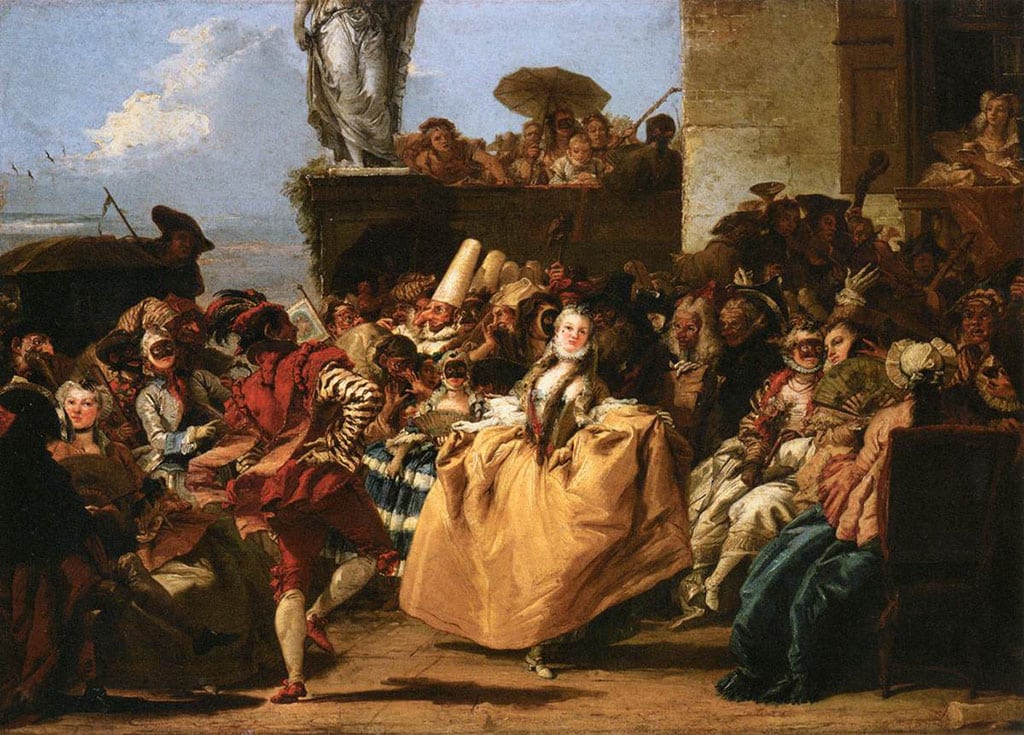Throughout history, humanity has always celebrated the changing of seasons and the renewal of life through various festivals and rituals. Among these, Carnival stands out as a vibrant tradition with roots stretching all the way back to ancient civilisations such as Ancient Greece and Rome.
Like with most ancient pagan festivals, celebrations included feasting, dancing and drinking, to welcome the end of winter and the beginning of spring. They believed that by driving out winter, they would ensure the renewal of life and fertility in the coming season.
In ancient Greece, the worship of Dionysus, the god of wine, fertility, and ecstasy, gave rise to elaborate festivals known as the Dionysian celebrations. These celebrations often featured theatrical performances, costumes and masks, music, dancing and lots of drinking. During the festival, women, slaves, and even prisoners would participate in the celebrations, and revel in the freedom usually reserved exclusively to male citizens.
Similarly, in ancient Rome, Saturnalia was celebrated in honour of Saturn, the god of agriculture and abundance. During the week-long festival, social norms were temporarily suspended, and people from all walks of life would come together to indulge in the festivities. Slaves were granted temporary freedom and treated as equals to their masters. Roles were sometimes even reversed, with masters serving food and drinks to their slaves.
Several Germanic tribes also celebrated the returning of daylight and transition into spring by worshipping the fertility goddess Nerthus. It is said that, during the festivities, a figure representing the goddess was placed on a ship with wheels and accompanied by people dressed as animals and men dressed as women.
With the spread of Christianity throughout Europe, many of these pagan traditions were gradually incorporated into Christian celebrations. As Christianity sought to convert pagan populations, it often adapted existing rituals and festivals to align with Christian beliefs and practices. One such adaptation was the incorporation of Carnival into the Christian calendar as a period of feasting and celebration before the fasting season of Lent.
Lent commemorates the 40 days Jesus spent fasting in the desert, and is a time of spiritual reflection and self-denial, during which many Christians abstain from meat and other indulgences. The word “Carnival” itself is derived from the Latin phrase “carne vale”, which means “farewell to meat”. This phrase reflects the tradition of indulging in rich foods and festivities before the period of Lenten abstinence begins.
Traditionally, Carnival feasts also marked the final opportunity for common people to enjoy hearty meals before the onset of spring. As winter drew to a close, food shortages were common, prompting people to make use of whatever reserves remained, such as lard, butter, and meat, which were at risk of spoiling as the seasons shifted.
Livestock, typically slaughtered in November, had already been processed, and their meat needed to be consumed. Depleting these winter stores was crucial to ensure everyone had enough sustenance to endure until fresh food sources became available again in the springtime.
During the Middle Ages, Carnival flourished across Europe, with each region adding its own unique customs and traditions to the festivities. For example, in Venice, Carnival became renowned for its masked balls, elaborate costumes, and grand processions along the city’s canals.
The wearing of masks served as a liberating force, allowing individuals to conceal their identities and indulge in behaviours that were otherwise forbidden. Behind the anonymity of their masks, people could engage in flirtation, mischief, and even political dissent, creating a space where social norms were temporarily suspended, and the imagination could roam free.
With the Age of Exploration and colonisation, Carnival spread to the Americas, where it blended with indigenous traditions to create vibrant new celebrations. For example, the Rio Carnival in Brazil has evolved into a massive street party with samba parades, vibrant costumes and music, attracting millions of visitors from around the world.
Historically, Carnival and the ancient festivities that preceded it have always been regarded as a transition from darkness to light, or from winter to spring. The festivities were a temporary release from social obligations and hierarchies, where order and social norms were abandoned, and chaos and joyfulness ensued.
Since this was seen as a symbolic renewal, and order always re-emerged once the festive period ended, this can be seen as the perfect opportunity to start afresh and set new goals and objectives if you didn’t do so already at the beginning of the year.
|| features@portugalresident.com
Jay works for a private charter airline, and is also a UX designer and aspiring author who enjoys learning about history and other cultures




















